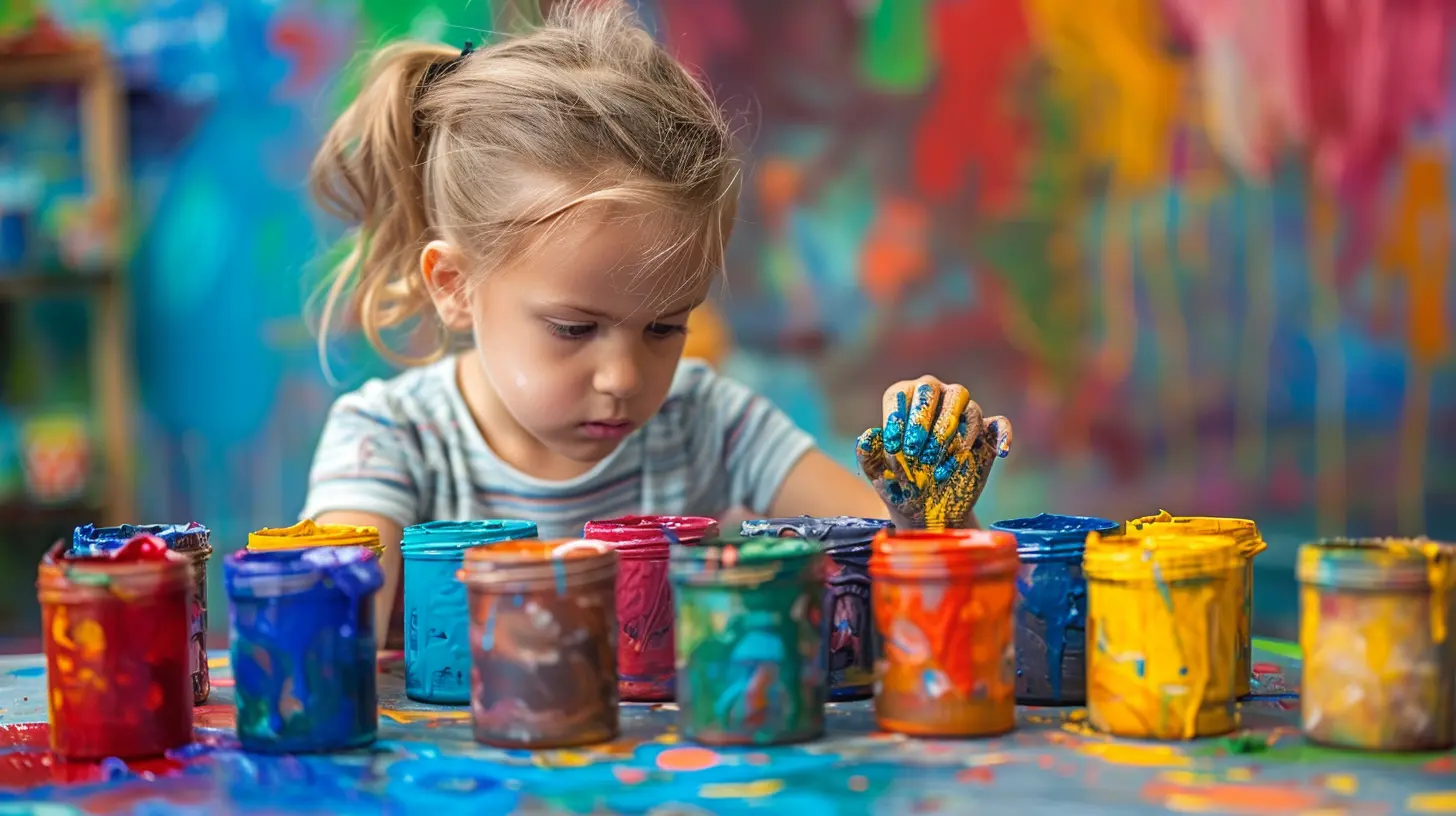Unleashing Creativity with Inquiry-Based Learning Strategies"
6 June 2025
Creativity is the superpower of the 21st century, and let’s be real—rote memorization just won’t cut it anymore. In a world bursting with innovations and new ideas daily, students need more than just facts and dates. They need to know how to think, ask questions, and explore the “what ifs.” That’s where inquiry-based learning steps in like a superhero wearing glasses and carrying a stack of curiosity-fueled questions.
So, what if I told you there's a teaching strategy that not only promotes critical thinking but also sparks genuine enthusiasm, engagement, and yes—creativity? Say hello to inquiry-based learning strategies, the game-changer in modern education.

What Is Inquiry-Based Learning Anyway?
Okay, let’s start with the basics. Inquiry-based learning (IBL) is like handing over the telescope to students and letting them look at the stars themselves instead of just showing them a constellation chart. It flips the traditional classroom model on its head.Instead of teachers doing all the talking and students taking notes like robots, IBL encourages learners to ask questions, investigate problems, and build their own understanding. It's student-driven, meaning learners become the drivers of knowledge rather than passengers.
Still with me? Awesome.

Why Creativity Matters in Education
We’re living in a time where information is literally at our fingertips. Ask any student a fact, and chances are they'll summon Google for an immediate answer. But what about questions that don’t have a clear-cut answer? That’s where creativity walks in.Creativity isn’t just about painting or writing poetry. It’s problem-solving, innovative thinking, and the confidence to try new things without fearing failure. And trust me, locking creativity in a box with standardized tests and rigid curriculums is like trying to teach a fish to climb a tree. It just doesn’t work.

The Link Between Inquiry and Creativity
Here’s where it all ties together like the final scene of a mystery movie. Inquiry-based learning creates the perfect playground for creativity. When students are encouraged to ask their own questions and find their own answers, they naturally tap into critical thinking, imagination, and yes—creative confidence.Think of inquiry-based learning as the soil, and creativity as the wildflowers that bloom from it.

Core Elements of Inquiry-Based Learning
Before we dive into strategies, let’s break down the nuts and bolts of IBL. There are four pillars this approach leans on:1. Questioning
At the heart of inquiry? Questions. But not just “What’s the capital of France?” More like, “Why do some cities become capitals and others don’t?” See the difference?Open-ended questions fuel the process. And the best part? These questions often come from students themselves.
2. Investigation
Once a good question has been asked, it’s time to dig. Research, experiments, interviews—whatever it takes to uncover answers. Students learn to explore various perspectives and gather evidence.3. Creation
Now, here’s the creative part. Students synthesize what they’ve learned into something new—a presentation, a model, a video, or even a podcast. This stage transforms information into innovation.4. Reflection
Finally, students evaluate what they’ve discovered and how they got there. This reinforces learning and, more importantly, helps them see the value in their creative process.Powerful Inquiry-Based Learning Strategies to Spark Creativity
Buckle up—here comes the good stuff. Here are some tried-and-true strategies that not only support inquiry-based learning but also supercharge creativity in the classroom.1. The Wonder Wall
You've heard of brain dumps and mind maps, but have you tried a Wonder Wall? Set up a space where students can post questions that pop into their heads. No filtering. No judging. Just pure curiosity.The goal? Let students anchor their learning journey on questions they’re actually interested in. This builds a habit of thoughtful inquiry and encourages creative thinking early on.
2. The 5 Whys Technique
It’s not just for toddlers anymore. The 5 Whys technique (yes, literally asking "why?" five times) pushes students to dig deeper into a topic. Every “why” uncovers another layer, and before you know it, students are exploring complex systems in a meaningful way.It's like peeling back the layers of an onion—you might cry a little from excitement.
3. Genius Hour
Give students one hour a week to explore a project of their choice. Anything goes—as long as it ties back to a guiding question or problem they’re genuinely passionate about.Genius Hour turns students into entrepreneurs of their own learning. And spoiler alert: the results are almost always mind-blowing.
4. Project-Based Learning (With a Twist)
Project-Based Learning (PBL) is a cousin of IBL but with more structure. Add a twist by letting students choose topics or problems based on real-world issues they care about—climate change, local community problems, mental health awareness.When students believe in the problem they’re solving, their creative engines rev up like racecars.
5. Role Reversal: Students as Teachers
This one’s a game-changer. Ask students to design and teach a mini-lesson to their peers. They’ll need to research, plan, and present—three essential skills that foster confidence and creative expression.Teaching something forces deeper understanding. Think about it—if you can explain it, you own it.
6. Socratic Seminars
Instead of lectures, try open-ended discussions where students reflect on a shared text, video, or concept. They pose questions, challenge opinions, and build off each other’s thoughts.It’s learning through dialogue, not monologue. And it gets those creative juices flowing in ways worksheets never will.
7. “What If” Scenarios
These are gold. Take any concept and throw in a “What if…" twist. What if gravity suddenly stopped for 10 minutes? What if Shakespeare was alive during the digital age?These mind-exploring exercises not only promote deeper understanding but also unleash imagination in ways that no textbook could.
Integrating Inquiry-Based Creativity into Everyday Lessons
You don’t need to overhaul your entire curriculum overnight. Inquiry-based learning strategies can blend seamlessly with existing lessons. Here's how:- Start Small: Begin with a few open-ended questions in your lesson plan.
- Model Curiosity: Show students how to ask thoughtful questions by doing it yourself.
- Celebrate Process Over Product: Focus on how students arrived at their answer, rather than the answer itself.
- Create Safe Spaces: Encourage risk-taking and let students know it's okay to fail.
Even in subjects like math and science, inquiry can fit right in. In fact, it thrives there. Instead of teaching formulas by rote, present real-life problems and let students discover the math behind the solution.
The Role of Technology in Inquiry-Based Learning
Technology is like the Swiss Army Knife for inquiry-based learning. It can help students research, collaborate, create, and reflect—all at the click of a button.- Research Tools: Google Scholar, online databases.
- Creative Platforms: Canva, Adobe Spark, podcasting tools.
- Collaboration Tools: Google Docs, Padlet, Jamboard.
But remember: tech is a tool, not a teacher. Use it to enhance the inquiry process, not replace it.
Challenges and How to Overcome Them
Let’s be honest—shifting to inquiry-based learning isn’t always smooth sailing. Here are a few bumps you may encounter and some smart ways around them:- Time Constraints: Start with short inquiry projects and build from there.
- Assessment Pressure: Use rubrics that assess creativity, critical thinking, and collaboration—not just correct answers.
- Student Resistance: Some students might feel overwhelmed at first. Structure and scaffolds help a lot here.
Final Thoughts: Teaching Isn’t Just about Answers—It’s About Questions
Inquiry-based learning doesn't just teach kids to find the right answer; it teaches them to ask the right questions. And in a world that changes faster than the weather, those who can think creatively, solve problems, and stay curious will be the ones who thrive.So whether you’re a teacher, a parent, or someone who just really loves education, it’s time to unleash that creativity. Crack open those curious minds and let inquiry run wild.
Let’s raise a generation of thinkers, doers, creators, and question-askers.
all images in this post were generated using AI tools
Category:
Inquiry Based LearningAuthor:

Olivia Lewis
Discussion
rate this article
3 comments
Aisha Ruiz
Inquiry-based learning truly empowers students to explore and innovate, fostering a genuine passion for discovery and critical thinking.
June 17, 2025 at 4:45 AM

Olivia Lewis
Thank you! I'm glad you resonate with the impact of inquiry-based learning on fostering creativity and critical thinking in students. It truly transforms the educational experience!
Nix Wood
This article on inquiry-based learning strategies highlights an essential approach to fostering creativity in education. By encouraging students to ask questions and explore topics deeply, educators can cultivate critical thinking and problem-solving skills, ultimately creating a more engaging and dynamic learning environment.
June 11, 2025 at 4:53 AM

Olivia Lewis
Thank you for your insights! I completely agree—fostering inquiry encourages not just creativity but also equips students with essential skills for lifelong learning.
Mackenzie McElroy
With inquiry-based learning, even a simple question can lead to a creative quest—let the brainstorming adventures begin!
June 9, 2025 at 4:44 AM

Olivia Lewis
Absolutely! Inquiry-based learning transforms questions into exciting explorations, fostering creativity and deeper understanding through collaborative brainstorming. Let the adventure commence!



